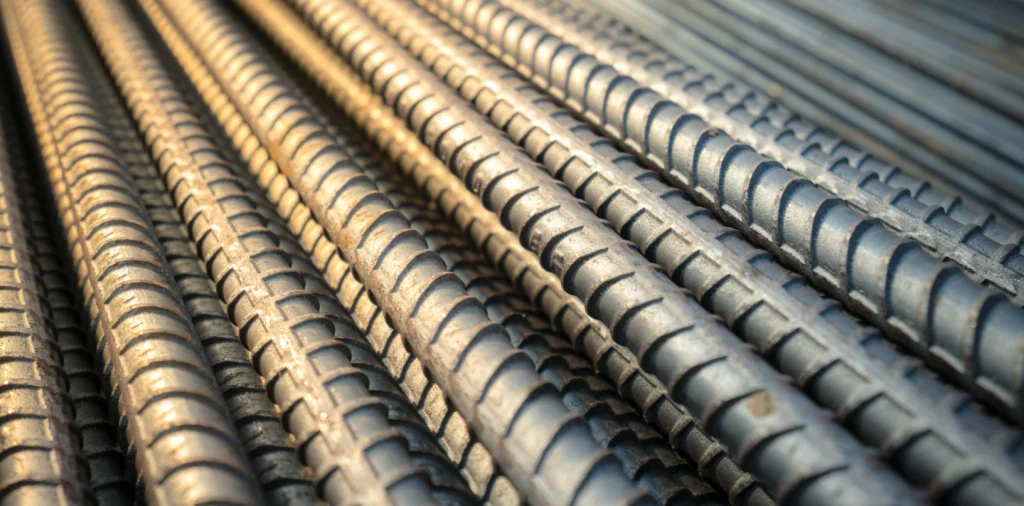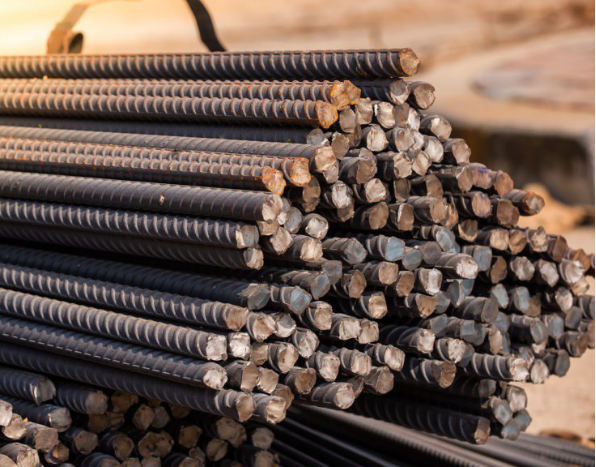Understanding Reinforcement Steel
The Role of Reinforcement Steel in Construction
Reinforcement steel, or rebar, is a big deal in building. It beefs up concrete structures. Concrete’s great at handling squishing forces. But it’s weak when pulled. Steel bars or mesh inside concrete add pull strength. They make things super tough. This combo powers bridges, buildings, dams, and roads. It keeps them steady under all kinds of weight and weather.
Rebar’s job is huge. Without it, concrete would crack under stress. With it, structures last longer. They handle tough conditions like earthquakes or storms. This steel-concrete team is the spine of modern construction projects.
Why Concrete Needs Reinforcement Steel
Concrete can’t take pulling forces alone. It cracks or breaks without help. Reinforcement steel steps in. It gives the pull strength concrete lacks. Steel and concrete bond tight. They work as one. This spreads stress across the structure. Steel’s bendy nature is a plus. It stretches under pressure before snapping. That gives warning signs, not sudden fails. It makes buildings safer.
This teamwork is key. It stops concrete from crumbling. It keeps structures solid. For big projects, this strength is a must to avoid disasters.
Key Features of Reinforcement Steel in Concrete Structures
Tensile Strength and Durability of Reinforced Concrete
Reinforcement steel is crazy strong. It fights pulling forces that could wreck concrete. This strength keeps structures solid. Plus, it’s super durable. It holds up for years, even in rough weather or tough settings. Rain, wind, or heat? Steel keeps going.
This durability saves cash long-term. Structures don’t need constant fixes. They stand tall through decades of use. It’s a win for any project needing lasting power.
Bonding Properties Between Steel and Concrete
The steel-concrete bond is everything. When steel’s buried in concrete, it sticks tight. Friction and chemical grip make it happen. This bond lets them share weight evenly. It stops steel from slipping when things get heavy.
A good bond means better buildings. It ensures the structure acts as one unit. No weak spots. No failures. This feature makes reinforcement steel a game-changer for safe construction.
Thermal Expansion Compatibility
Steel and concrete play nice with heat. They expand and shrink at similar rates when temps change. This keeps internal stress low. No cracks from hot or cold swings. It’s a big deal for keeping structures whole over time.
This match-up is a hidden hero. It stops sneaky damage from weather shifts. Buildings stay strong, no matter the climate. It’s why rebar’s a top pick for all kinds of projects.
Advantages of Using Different Types of Reinforcement Steel
Corrosion Resistance in Harsh Environments
Rust is a killer in wet or salty spots. Think oceans or humid zones. Special rebars fight back. Epoxy-coated or stainless-steel rebars resist corrosion. They keep rust at bay. This makes structures last longer, even in tough conditions like coastal bridges or docks.
These rust-proof types are a lifesaver. They cut down on repairs. They keep projects safe and sturdy, no matter where they’re built.
Enhanced Structural Integrity for Long-Term Use
Reinforced concrete is built to last. High-strength steel and tough concrete team up. They handle shaking, heavy loads, or natural disasters like quakes. This means less upkeep over time. Buildings and bridges stay strong for decades.
This long-term strength is key. It saves money on fixes. It keeps structures safe. For big infrastructure, it’s a must to ensure years of solid performance.
Cost-Effective Solutions for Various Projects
Reinforcement steel is a budget buddy. It’s versatile and easy to get. You can shape it to fit any project. Qingdao Sunrise New Material Co., Ltd. offers custom steel solutions worldwide. This flexibility keeps costs down while keeping buildings strong.
It’s a smart choice. You get top performance without breaking the bank. For projects big or small, rebar delivers value and reliability.
Choosing the Right Reinforcement Steel for Your Project
Factors to Consider When Selecting Reinforcement Steel
Picking the right reinforcement steel takes thought. You need to check its strength. Look at tensile strength, yield strength, and bendiness. These show how it handles force without breaking. High-strength steel is great for heavy-duty jobs like skyscrapers or bridges.
Where you’re building matters too. Wet or salty spots? Go for rust-proof options like epoxy-coated or stainless-steel rebars. They last in harsh weather. Project needs, like bar shapes or sizes, are big too. Custom options let you match the steel to your plans.
Money’s a factor as well. Fancy rebars like stainless steel cost more. But they’re worth it for some jobs. Weigh performance against budget. This gets you the best bang for your buck.
Matching Specific Types to Project Requirements
Different rebars fit different jobs. Plain bars work for simple stuff. Think dowels or joints where grip’s not key. Deformed bars have ridges. They stick to concrete better. They’re the go-to for most building work.
Epoxy-coated rebars shine in rust-prone spots. Their coating stops corrosion. They’re great for bridges or coastal builds. Galvanized rebars add protection too. They’re common in infrastructure like roads.
For top-tier jobs, stainless-steel rebars rule. They’re pricey but super tough. They resist rust and last forever. They’re perfect for projects needing max strength and life.
The Importance of Standards and Codes for Reinforcement Steel
Overview of International Standards for Reinforcing Materials
Standards keep rebar reliable. Rules like ASTM A615/A615M and BS 4449 set the bar. They cover chemical makeup, strength, and testing. This ensures every batch is solid. ASTM grades rebars by yield strength. It helps builders pick the right stuff for safety.
Global codes like ISO 6935-2 make trade smooth. They ensure rebars from anywhere work together. This keeps projects consistent, no matter where the steel comes from.
Understanding Yield Strength, Ductility, and Diameter Options
Yield strength is how much stress steel takes before bending for good. Higher means tougher rebar. Ductility lets steel stretch before snapping. It’s huge for quake-prone spots. It gives warning before a break.
Bar sizes matter too. Thin ones fit detailed or light builds. Thick ones support heavy stuff like bridges or towers. Picking the right size keeps structures safe and efficient.
The Future of Reinforcement Steel in Sustainable Construction
The Role of Recycled Materials in Eco-Friendly Projects
Green building loves recycled rebar. Scrap metal gets reused. It saves natural resources. It cuts energy use compared to new steel. Recycled rebar lowers carbon footprints. It fits global green goals without skimping on quality.
New recycling tech makes this steel just as good as fresh stuff. It’s strong and reliable. For projects aiming to be eco-friendly, recycled rebar is a top pick. It’s good for the planet and still gets the job done.
Innovations in Reinforcement Technology
Rebar tech is getting wild. Nano-coatings boost rust resistance. They’re light and cheap. Hybrid rebars mix steel with stuff like glass fiber-reinforced polymers (GFRP). These are strong, light, and rust-proof. They’re perfect for bridges or seafront builds.
Digital tools are big too. Building Information Modeling (BIM) plans rebar layouts perfect. It cuts waste. It saves time. These advances make rebar greener and sharper for future projects.
Frequently Asked Questions (FAQs)
What factors should be considered when choosing reinforcement steel?
Check strength, bendiness, and rust resistance. Think about weather, project needs, costs, and global standards.
How do international standards benefit construction projects?
They keep materials consistent. They ensure quality from any supplier. They make global trade easier.
Can recycled materials be used in reinforcement steel?
Yup. Recycled steel is green and meets quality needs for eco-friendly builds.
What are some recent innovations in reinforcement technology?
Nano-coatings for rust protection, hybrid steel-GFRP rebars, and BIM for smarter layouts.
Why is ductility important in reinforced concrete structures?
It lets structures bend without breaking. It’s key for safety in quakes or heavy stress.
Qingdao Sunrise New Material Co., Ltd. (referred to as “Sunrise New Material”) is an international and professional supplier of steel and non-ferrous metal raw materials.








